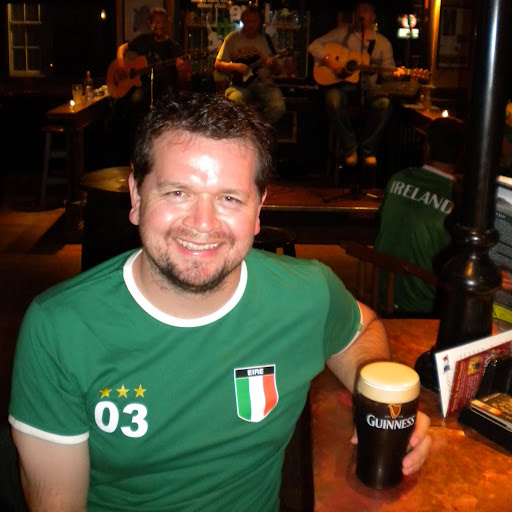Jason Paul Brewer
age ~45
from Richmond, VA
- Also known as:
-
- Jason P Brewer
- Jaosn Paul Brewer
Jason Brewer Phones & Addresses
- Richmond, VA
- 11349 Corliss Ave N, Seattle, WA 98133
- Seatac, WA
- Henderson, NV
- West Hollywood, CA
- Manhattan Beach, CA
- Alexandria, LA
- Santa Monica, CA
- Brooklyn, NY
- 813 Westbourne Dr APT 10, West Hollywood, CA 90069 • 3183124898
Work
-
Position:Service Occupations
Specialities
Lawsuits & Disputes • Intellectual Property • Trial Proceedings Before the PTAB
Resumes

Mc/Dj For Fingerlakes Entertainment
view sourcePosition:
MC/DJ at Fingerlakes Entertainment, IT, Network Administrator at Department of Social Services
Location:
Penn Yan, New York
Industry:
Entertainment
Work:
Fingerlakes Entertainment since Jan 2007
MC/DJ
Department of Social Services since Feb 2005
IT, Network Administrator
MC/DJ
Department of Social Services since Feb 2005
IT, Network Administrator
Education:
American InterContinental University 2013 - 2015
BIT, System, Networking, and LAN/WAN Management/Manager American Intercontinnental University, Online 2004 - 2006
Business, Business Administration/Management
BIT, System, Networking, and LAN/WAN Management/Manager American Intercontinnental University, Online 2004 - 2006
Business, Business Administration/Management
Skills:
Entertainment
Weddings
Event Planning
Corporate Events
Music
Radio
Mac
Public Relations
Public Speaking
Marketing
Web Design
Social Media
Weddings
Event Planning
Corporate Events
Music
Radio
Mac
Public Relations
Public Speaking
Marketing
Web Design
Social Media

Area Manager- Pnw Area At Basf Construction Chemicals
view sourcePosition:
Area Manager-Pacifc Northwest Area at BASF Construction Chemicals
Location:
Greater Seattle Area
Industry:
Chemicals
Work:
BASF Construction Chemicals - Pacific Northwest US since Nov 2007
Area Manager-Pacifc Northwest Area
Area Manager-Pacifc Northwest Area
Education:
Washington State University
BS, Biology
BS, Biology

Jason Brewer
view sourceLocation:
Port Orange, Florida
Industry:
Higher Education
Skills:
Enrollment Management
Higher Education
Student Affairs
Public Speaking
Teaching
Student Development
Fundraising
Non-profits
Event Planning
Grant Writing
Admissions
Research
Retaining Customers
Curriculum Design
Leadership Development
Enrollment Management
Higher Education
Student Affairs
Public Speaking
Teaching
Student Development
Fundraising
Non-profits
Event Planning
Grant Writing
Admissions
Research
Retaining Customers
Curriculum Design
Leadership Development
Enrollment Management

Long Time Dream And Goal Finally Has Come True, My Own Resale Shop
view sourcePosition:
Owner / Operator at Coastal Resale & Consignment
Location:
Fairhope, Alabama
Industry:
Sporting Goods
Work:
Coastal Resale & Consignment - The 181 Market since Nov 2012
Owner / Operator
Owner / Operator

Software Developer At Facebook
view sourcePosition:
Software Developer at Facebook
Location:
Greater Seattle Area
Industry:
Computer Software
Work:
Facebook since 2011
Software Developer
Microsoft 2006 - 2011
Software Developer
Software Developer
Microsoft 2006 - 2011
Software Developer
Education:
Arizona State University

Jason Brewer
view sourceLocation:
United States

Director
view sourcePosition:
Director, Center for First Year Experience and Learning Communities at University of Cincinnati
Location:
Cincinnati, Ohio
Industry:
Higher Education
Work:
University of Cincinnati - Cincinnati Area since Jul 2012
Director, Center for First Year Experience and Learning Communities
Director, Center for First Year Experience and Learning Communities

Jason Brewer
view sourceLocation:
United States
Name / Title
Company / Classification
Phones & Addresses
Owner
Top Choice Automotive
Auto Repair & Service
Auto Repair & Service
10 Timothy Avenue, Unit 12, Hanwell, NB E3C 2B8
5064549090
5064549090
Manager
Brewer Communications
Telecommunications · Electrical Contractor Ret Misc Merchandise · Telecommunications Interconnect
Telecommunications · Electrical Contractor Ret Misc Merchandise · Telecommunications Interconnect
2525 Turkey Crk Rd, Oilville, VA 23129
PO Box 92, Oilville, VA 23129
8047498100, 8047498339
PO Box 92, Oilville, VA 23129
8047498100, 8047498339
IT/Internet Support
Fehr & Peers
Engineering Services
Engineering Services
600 Wilshire Blvd, Los Angeles, CA 90017
Us Patents
-
Configuring Security Mechanisms Utilizing A Trust System
view source -
US Patent:7853992, Dec 14, 2010
-
Filed:May 31, 2007
-
Appl. No.:11/756310
-
Inventors:Neeraj Garg - Redmond WA, US
Jason Brewer - Kirkland WA, US
Anatoliy Panasyuk - Bellevue WA, US -
Assignee:Microsoft Corporation - Redmond WA
-
International Classification:G06F 17/30
G06F 17/00 -
US Classification:726 4, 726 3, 726 11
-
Abstract:Implementations of configuring security mechanisms utilizing a trust system are described. In one implementation, a request to communicate is received at a protected device. Before permission to communicate can be granted, a list of trusted devices is accessed. If information, such as an identity or a secret, associated with the device sending the request to communicate correlates to information found on the list of trusted devices, then communication can be allowed. Otherwise, communication between the device and the protected device can be denied.
-
Software-Based Aliasing For Accessing Multiple Shared Resources On A Single Remote Host
view source -
US Patent:20090327502, Dec 31, 2009
-
Filed:Jun 30, 2008
-
Appl. No.:12/165495
-
Inventors:Jason Brewer - Kirkland WA, US
Neeraj Garg - Redmond WA, US
Gavarraju Nanduri - Bellevue WA, US
Vikram Kakumani - Kirkland WA, US -
Assignee:MICROSOFT CORPORATION - Redmond WA
-
International Classification:G06F 15/16
-
US Classification:709229
-
Abstract:In order to allow a single user registered on a single local host or other machine to access multiple shared resources on a remote host, an aliasing mechanism is employed so that multiple concurrent connections can be established by the user to a single remote host, with each connection using a different identity. Each connection can therefore be used to access a different shared resource on the remote host. In some illustrative examples, a user's identifier such as his or her machine log-in identification may be associated with two or more resource sharing aliases. As a result, two or more resource sharing sessions can be established by the user with a single remote host, with each of the sessions using a different one of the aliases. The resource sharing sessions are usually established in accordance with a resource sharing protocol such as the Server Block Message (SBM) protocol.
-
Conditional Execution Of Regular Expressions
view source -
US Patent:20120110003, May 3, 2012
-
Filed:Nov 3, 2010
-
Appl. No.:12/938895
-
Inventors:Jason E. Brewer - Kirkland WA, US
Charles W. Lamanna - Bellevue WA, US
Mauktik H. Gandhi - Redmond WA, US -
Assignee:MICROSOFT CORPORATION - Redmond WA
-
International Classification:G06F 17/30
-
US Classification:707769, 707E17014
-
Abstract:Embodiments directed to conditionally executing regular expressions and to simplifying regular expressions by canonicalizing regular expression terms. In an embodiment, a computer system accesses identified regular expression key terms that are to appear in a selected portion of text. The regular expression key terms are identified from terms in a selected regular expression. The computer system determines whether the identified regular expression key terms appear in the selected portion of text. The computer system also, upon determining that none of the identified regular expression key terms appears in the selected portion of text, prevents execution of the regular expression. Upon determining that at least one of the identified regular expression key terms appears in the selected portion of text, the computer system executes the regular expression.
-
Indexing And Querying Hash Sequence Matrices
view source -
US Patent:20120117080, May 10, 2012
-
Filed:Nov 10, 2010
-
Appl. No.:12/943780
-
Inventors:Charles William Lamanna - Bellevue WA, US
Mauktik H. Gandhi - Redmond WA, US
Jason Eric Brewer - Kirkland WA, US -
Assignee:MICROSOFT CORPORATION - Redmond WA
-
International Classification:G06F 17/30
-
US Classification:707747, 707E17052
-
Abstract:Embodiments are directed to indexing and querying a sequence of hash values in an indexing matrix. A computer system accesses a document to extract a portion of text from the document. The computer system applies a hashing algorithm to the extracted text. The hash values of the extracted text form a representative sequence of hash values. The computer system inserts each hash value of the sequence of hash values into an indexing matrix, which is configured to store multiple different hash value sequences. The computer system also queries the indexing matrix to determine how similar the plurality of hash value sequences are to the selected hash value sequence based on how many hash values of the selected hash value sequence overlap with the hash values of the plurality of stored hash value sequences.
-
Decomposing And Merging Regular Expressions
view source -
US Patent:20120158768, Jun 21, 2012
-
Filed:Dec 15, 2010
-
Appl. No.:12/968618
-
Inventors:Charles William Lamanna - Bellevue WA, US
Mauktik H. Gandhi - Redmond WA, US
Jason Eric Brewer - Kirkland WA, US -
Assignee:Microsoft Corporation - Redmond WA
-
International Classification:G06F 17/30
-
US Classification:707769, 707E17039
-
Abstract:The present invention extends to methods, systems, and computer program products for decomposing and merging regular expressions. Embodiments of the invention decompose a regular expression into multiple simple keyword graphs, merge those keyword graphs in a compact and efficient manner, and produce a directed acyclic graph (DAG) that can execute a simplified regular expression alphabet. Several of these regular expression DAG's can then be merged together to produce a single DAG that represents an entire collection of regular expressions. DAGs along with other text processing algorithms and a heap collection can be combined in a multi-pass approach to expand the regular expression alphabet.
-
Machine Learning Modeling Using Social Graph Signals
view source -
US Patent:20210224661, Jul 22, 2021
-
Filed:Apr 8, 2021
-
Appl. No.:17/225767
-
Inventors:- Santa Monica CA, US
Jason Brewer - Marina del Rey CA, US
Nima Khajehnouri - Los Angeles CA, US
Hadi Minooei - Irvine CA, US
Benjamin C. Steele - Oak Park CA, US
Qian You - Marina del Rey CA, US -
International Classification:G06N 5/02
G06F 16/951
G06N 20/00 -
Abstract:Systems and methods are provided for receiving a request for lookalike data, the request for lookalike data comprising seed data and generating sample data from the seed data and from user data for a plurality of users, to use in a lookalike model training. The systems and methods further provide for capturing a snapshot of social graph data for a plurality of users and computing social graph features based on the seed data and the user data for the plurality of users, training a lookalike model based on the sample data and the computed social graph features to generate a trained lookalike model, generating a lookalike score for each user of the plurality of users in the user data using the trained lookalike model, and generating a list comprising a unique identifier for each user of the plurality of users and an associated lookalike score for each unique identifier.
-
Systems And Methods To Provide Local Suggestions Based On Spectral Clustering
view source -
US Patent:20180165302, Jun 14, 2018
-
Filed:Dec 12, 2016
-
Appl. No.:15/376287
-
Inventors:- Menlo Park CA, US
Jason Eric Brewer - Kirkland WA, US
Bradley Ray Green - Snohomish WA, US -
International Classification:G06F 17/30
H04L 29/08 -
Abstract:Systems, methods, and non-transitory computer readable media are configured to apply a spectral clustering technique to at least a portion of a similarity graph to generate clusters of geographic sub-regions constituting geographic regions. A tf-idf technique is performed to determine pages of a social networking system associated with a geographic region as potential local suggestions for a user associated with a geographic sub-region in the geographic region. References to at least a portion of the pages are presented as local suggestions to the user.
-
Determining Explicit And Implicit User Biases For Search Results On Online Social Networks
view source -
US Patent:20180115479, Apr 26, 2018
-
Filed:Dec 11, 2017
-
Appl. No.:15/837864
-
Inventors:- Menlo Park CA, US
Jason Eric Brewer - Kirkland WA, US -
International Classification:H04L 12/26
G06F 17/30 -
Abstract:In one embodiment, a method includes receiving a query input, parsing the query input to identify one or more n-grams, determining a search bias of the first user with respect to the query input, the search bias being determined based on an explicit bias and an implicit bias of the first user, wherein the explicit bias is based on an analysis of the entities associated with the online social networking matching n-grams in the query input, and wherein the implicit bias is based on an analysis of user-profile information of a plurality of second users sharing one or more user attributes with the first user, identifying content objects matching the query input based at least in part on the search bias of the first user, and sending instructions for presenting a search-results interface comprising references to the identified content objects.
Lawyers & Attorneys

Jason Brewer - Lawyer
view sourceSpecialties:
Lawsuits & Disputes
Intellectual Property
Trial Proceedings Before the PTAB
Intellectual Property
Trial Proceedings Before the PTAB
ISLN:
922766047
Admitted:
2013
University:
Northeastern University, 2007; University of Kentucky, B.A., 2003
Law School:
The John Marshall Law , J.D., 2013
Googleplus

Jason Brewer
Lived:
Sterling, CO
Diamond Bar, CA
Las Vegas, NV
Colorado Springs, CO
Fullerton, CA
Brea, CA
Chino Hills, CA
Patton, MO
Diamond Bar, CA
Las Vegas, NV
Colorado Springs, CO
Fullerton, CA
Brea, CA
Chino Hills, CA
Patton, MO
Work:
Sterling Correctional Facility - Correctional Officer
Wal-Mart - Security (2010-2011)
Wal-Mart - Security (2010-2011)
Education:
Colorado Technical University - Criminal Justice, Diamond Bar High School - Diploma

Jason Brewer
Work:
Brolik Productions - CEO (2004)
Education:
Pennsylvania State University - Film/Video, Easton High School
About:
Jason lives in Philadelphia, where he is CEO of Brolik, a digital agency.
Tagline:
Jason is the CEO of Brolik, a digital agency in Philadelphia. Brolik specializes in web & application design, branding and video animation.

Jason Brewer
Lived:
Chicago, IL
Long Beach, CA
Honolulu, HI
Long Beach, CA
Honolulu, HI
Education:
East Leyden High School

Jason Brewer
Work:
Explorers Club Music LLC - BOSSMAN (2005)
Education:
Charleston Southern University - Playing Guitar in my Dorm Room with Dave Ellis.
About:
Songwriter. Husband. Laker Fan. http://www.explorersclubmusic....
Tagline:
Http://www.explorersclubmusic....

Jason Brewer
Work:
Deloitte Touche Tohmatsu
Education:
James Madison University, University of Virginia

Jason Brewer
Education:
Ball State University - Business Administration, Tell City High School
Tagline:
Just one man living the dream.

Jason Brewer
Work:
Georgia Institute of Technology
Education:
University of Florida - History

Jason Brewer
Education:
University of North Carolina at Greensboro - Education
Plaxo

Jason Brewer
view sourceAlpharetta, GARPSGT/Nighttime Clinical Supervisor at Sleep Disor... For the past 9 years I have worked as a sleep tech. In December of 2002, I passed the required testing to become a Registered Polysomonographic Technologist... For the past 9 years I have worked as a sleep tech. In December of 2002, I passed the required testing to become a Registered Polysomonographic Technologist (RPSGT). My career in sleep began with a small lab in Macon and moved quickly to the Atlanta/North Georgia area where I worked in small labs...

Jason Brewer
view sourceAvery Dennison

Jason Brewer
view sourceParis, TN

Jason Brewer
view source
Jason Brewer
view source
Jason Brewer
view sourceDallas, TXTexas Instruments

Jason Brewer
view sourceUS Army

JASON BREWER
view sourceUS Army
Youtube
Classmates

Jason Brewer
view sourceSchools:
Hazelwood Junior High School New Albany IN 1986-1990
Community:
Gary Darnell, Terry Reed, Tera South, Samuel Lockhart

Jason Brewer
view sourceSchools:
Lakeside High School Martinez GA 1990-1994
Community:
Chris Lamb, Amy Williams, Jennifer Harris

Jason Brewer
view sourceSchools:
Lithia Springs Comprehensive High School Lithia Springs GA 1984-1988
Community:
Gay Allen, Mary Bart

Jason Brewer
view sourceSchools:
Edison High School Gary IN 1994-1998
Community:
Dan Taylor, Cyndy Bazin, Joyce Reeves

Jason Brewer
view sourceSchools:
Swift Creek Junior High Shcool Chesterfield VA 1987-1989
Community:
David Pierson

Jason Brewer
view sourceSchools:
Union City Community High School Union City IN 1991-1995
Community:
Bill Swales, Jim Hufford, Flora Binkley

Jason Brewer
view sourceSchools:
Klondike High School West Lafayette IN 1963-1967
Community:
Cecil Jim, Jeanie Vanschepen, Dennis Ward, Daniel Cole, Terri Tillman

Jason Brewer
view sourceSchools:
Henry County High School Paris TN 1995-1999
Community:
Cammie Clayton

Jason Michael Brewer
view source
Jason Thomas Brewer
view source
Jason Lee Brewer
view source
Jason Glenn Brewer
view source
Jason Keith Brewer
view source
Jason Edward Brewer
view source
Jason Paco Brewer
view source
Jason Unbreakable Brewer
view sourceFlickr
Myspace
Get Report for Jason Paul Brewer from Richmond, VA, age ~45


















